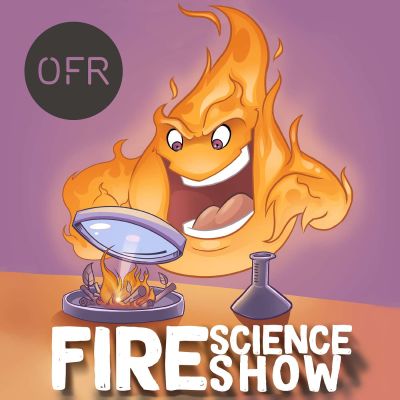Fire Science Show is connecting fire researchers and practitioners with a society of fire engineers, firefighters, architects, designers and all others, who are genuinely interested in creating a fire-safe future. Through interviews with a diverse group of experts, we present the history of our field as well as the most novel advancements. We hope the Fire Science Show becomes your weekly source of fire science knowledge and entertainment. Produced in partnership with the Diamond Sponsor of the show - OFR Consultants
https://www.firescienceshow.com/
episode 87: 087 - Structural FSE inspired by earthquake engineering with Negar Elhami Khorasani
Performance-based engineering or the use of probabilistic methods in building design are not inventions of Fire Safety Engineering. But we sometimes tend to act like we need to 'discover' and work out everything on our own. I strongly believe this is not the best way forward. And certainly not the cheapest one...
Where I see a lot of potential is the adaptation of methods and models that work in other parts of civil engineering, that could act as solutions to issues related to fire. Such a case is with The Pacific Earthquake Engineering Research (PEER) Center’s Performance-Based Earthquake Engineering (PBEE) - brought to the fire safety engineering community by David Lange (a previous guest on the show) and Asif Usmani in 2014, and now is championed by my today's guest Dr Negar Elhami Khorasani. Negar gives us a very in-depth view of the status of Structural Fire Safety Engineering and shows an inspiring framework in which probabilistic inputs at different stages of the analysis can be used to build up a model of safety in a building, that is much more informative than whatever we assume through design with prescriptive rules. A step up from the structural fire safety engineering framework, but one that feels very smart and natural.
The best part of this episode is reading this framework between the lines. Yes, it is adopted for structural design. But it does not have to. It can be adapted to many different areas of fire science, and in my case, we will definitely seek an implementation in wind-fire coupled modelling. So, no matter if you are dealing with the most impressive structural designs crafted for fire, or if it is something not very relevant to your current tasks, please have an open mind and try to understand the workflow and ideas behind this framework, it seems really worth it!
And here are some resources I received from Negar, that may be relevant to you, if you find this topic interesting:
- 2014 paper by Lange et al. on the application of performance-based earthquake engineering framework to structures in fire
- 2014 paper on a probabilistic model for fire load
- 2015 and 2020 papers on probabilistic material models
- 2016 paper on fire fragility curves
- 2020 paper on probabilistic models for permanent and live loads
- 2022 on the reliability of US prescriptive standard for steel column
Fire Science Show is sponsored by OFR Consultants.
OFR Consultants is a multi-award-winning independent consultancy dedicated to addressing fire safety challenges. OFR is the UK’s leading fire risk consultancy. Its globally established team has developed a reputation for pre-eminent fire engineering expertise, with colleagues working across the world to help protect people, property, and the planet.
----
The Fire Science Show is produced by the Fire Science Media in collaboration with OFR Consultants. Thank you to the podcast sponsor for their continuous support towards our mission.
